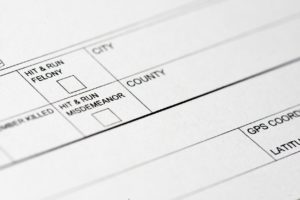Proving a Hit and Run in Florida: What Evidence is Needed?
If you were injured in a hit-and-run accident in Florida, you will need evidence to file an insurance claim. While your personal injury protection (PIP) policy should provide a small amount of coverage regardless of what happened, PIP doesn’t cover all of the costs of serious accident-related injuries. When it comes to collecting evidence, time is of the essence, so it is important that you speak with a Florida car accident attorney as soon as possible.
The evidence you need after a hit-and-run accident depends on the type of insurance claim you will be filing. Of course, you won’t know this until you have tried to identify the driver who hit you. If you can identify the hit-and-run driver, then you may have a claim under his or her insurance policy (assuming he or she has coverage) or possibly against his or her employer (if he or she was working at the time of the accident). If you can’t identify the hit-and-run driver, then you may need to rely on your own uninsured/underinsured motorist coverage—if you have this coverage available.
3 Key Aspects of Proving a Hit and Run in Florida
To understand why the type of claim you can file is important for determining what evidence you need, we can take a look at three key aspects of proving a hit and run in Florida:
1. Proving that You Were Involved in a Hit and run Accident
When you have a claim for a hit-and-run accident, the first step is simply proving that you were involved in a hit-and-run. If you can prove that you were involved in a hit and run (and that the other driver was at fault), you can file an uninsured/underinsured motorist claim even if it isn’t possible to identify the at-fault driver.
With this in mind, some of the key types of evidence in a hit-and-run accident case are the same as those used in other types of accident cases. For example, to prove that you are entitled to coverage, your Florida car accident attorney may be able to use evidence such as:
- The Damage to Your Vehicle – The location and extent of the damage to your car, truck or SUV will be helpful for showing that you got hit by another vehicle.
- Forensic Evidence from the Crash Site – Tire marks, damaged sign posts or guard rails, damaged vegetation, and other forms of forensic evidence from the crash site could help prove that you got hit as well.
- Witness Testimony – If anyone witnessed your hit-and-run accident, they may be able to testify in support of your claim for uninsured/underinsured motorist coverage.
- Photos or Videos – If your hit-and-run accident was captured on video, or if any witnesses took photos or videos of the other driver speeding away, this could also be key evidence in support of your insurance claim.
Again, these are just examples—various other forms of evidence may be available as well. The circumstances surrounding your accident could also demonstrate that someone else was responsible for causing the collision. For example, if you got rear-ended, this in itself could be evidence that the driver who hit you was at fault. Likewise, if you got hit by a driver who crossed the center line, being able to prove that you were on your side of the road at the time of impact could be a key factor in your case.
2. Proving Who Hit You and Fled the Scene of the Accident
If you can prove who hit you, then you shouldn’t have to rely on your own insurance coverage (unless other coverage isn’t available—unfortunately, a large percentage of Florida drivers are uninsured). While identifying a hit-and-run driver can be challenging, an experienced Florida car accident attorney may be able to piece together various pieces of evidence to make an identification.
For example, witness testimony, photos and videos can help in many cases—and, if you can remember anything about the vehicle that hit you, you should share as many details as possible with your attorney. If the police are investigating, your attorney can work with the police to find out what they know as well. Your attorney can also check to see if anyone has posted anything about the accident on social media.
3. Proving the Damages You Are Entitled to Recover
Regardless of whether it is possible to identify the hit-and-run driver, seeking coverage for your injuries will also require evidence of the damages you are entitled to recover. This evidence can also take many different forms. For example, to prove that you are entitled to coverage outside of PIP, your attorney may need to present evidence such as:
- Medical records
- Receipts for other accident-related expenses
- Employment records
- Proof of your pain and suffering
While dealing with a hit-and-run accident can be frustrating, it is important not to give up hope. If the accident wasn’t your fault, your legal rights are clear—and, while there are no guarantees, there are many ways an experienced Florida car accident attorney can help. It is also important to keep in mind that hiring an attorney costs nothing out of pocket. You can hire an attorney to investigate your accident for free, and regardless of whether your attorney can identify the hit-and-run driver, you won’t have to pay anything unless your attorney helps you recover just compensation.
Talk to a Florida Car Accident Attorney at Searcy Denney
If you were injured in a hit and run accident in Florida, we strongly encourage you to contact us promptly for more information. We can investigate your accident immediately, and we can help you understand your options based on the evidence that is available. To arrange a free consultation with a Florida car accident attorney at Searcy Denney as soon as possible, call 800-780-8607 or send us your contact information online now.
Share This



